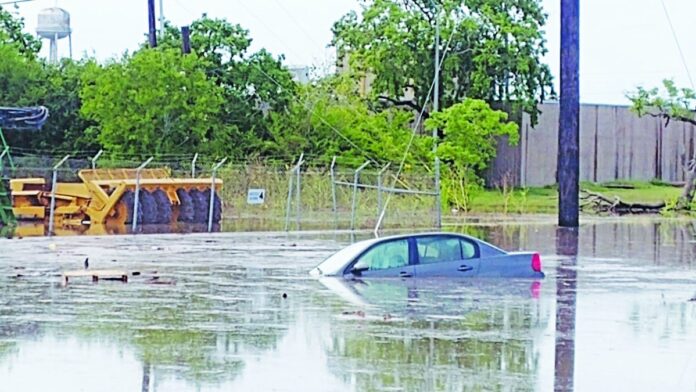For the second year in a row, heavy rains left parts of the Valley underwater. Some residents were still dealing with damage from last year’s floods when the June storms hit.
Residents’ frustrations were evident during a meeting between Cameron County officials and residents in Santa Rosa on July 19 that turned hostile. County Judge Eddie Treviño Jr. later issued a letter of apology for language he used in an exasperated response to a barrage of residents’ complaints and questions.
Fortunately, some help is on the way. President Trump recently signed a disaster declaration that enables communities and residents for federal funds to recover from the latest floods. Residents in Cameron, Hidalgo and Willacy counties can apply for up to $34,000 from the Federal Emergency Management Agency.
Those who have dealt with previous disasters, however, know that every application isn’t approved, the process can take years and the full amount is rarely given; often it doesn’t cover all losses.
Another positive development is the creation of a flood control district in Cameron County. The recent legislative session authorized the district’s creation, allowing the county to levy taxes specifically for flood-control projects.
Some homeowners surely will complain about yet another tax on their property, especially when they’re also paying to fix their own flood damage. But the only way to mitigate the effects of future storms is to invest in better preparation. If a better system reduces or eliminates flooding, and the associated repair costs, those savings could offset the taxes paid to the flood control district.
Officials, at both the city and county level, need to invest in drainage systems that can withstand once-in-50-year, or even 100-year storms, rather than weaker systems that might cost less but must be rebuilt after every major storm. Harlingen officials were still touting drainage repairs made after last year’s storms when the recent storm overwhelmed the system. Officials later said the work could meet 10-year storm severity, while the June rains brought 100-to-500-year runoff levels.
McAllen raised drainage and retention standards to 50-year a threshold after the 2018 storms, and all new development must meet that standard. Hidalgo County officials are considering doing the same. That should be the minimum for flood-prone areas like the Valley, even if the state only requires 10-year standards.
For their part, residents should rely less on government to fix their problems. They should make sure they have adequate flood insurance so they can rebuild without having to wait for tax-funded help that could take years to arrive, if it comes at all.
The initial investment might be greater, but money should be saved long-term if the systems withstand greater pressures and need less repair. Flood insurance, which state law requires in coastal counties, also should enable residents to repair the damage faster and more conveniently than filing and praying for a FEMA check to arrive.
Living in the Valley has many benefits, but also some costs, and one of those costs is dealing with the inevitable storms. Proper preparation is one investment that can help reduce the cost of rebuilding after those storms hit.
Valley Morning Star





